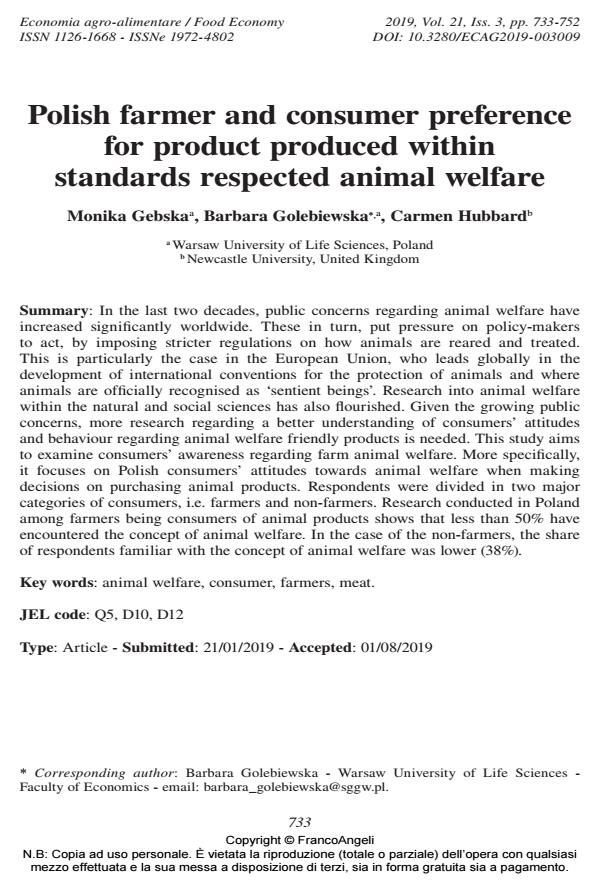Polish farmer and consumer preference for product produced within standards respected animal welfare
Titolo Rivista ECONOMIA AGRO-ALIMENTARE
Autori/Curatori Monika Gebska, Barbara Golebiewska, Carmen Hubbard
Anno di pubblicazione 2020 Fascicolo 2019/3
Lingua Inglese Numero pagine 20 P. 733-752 Dimensione file 293 KB
DOI 10.3280/ECAG2019-003009
Il DOI è il codice a barre della proprietà intellettuale: per saperne di più
clicca qui
Qui sotto puoi vedere in anteprima la prima pagina di questo articolo.
Se questo articolo ti interessa, lo puoi acquistare (e scaricare in formato pdf) seguendo le facili indicazioni per acquistare il download credit. Acquista Download Credits per scaricare questo Articolo in formato PDF

FrancoAngeli è membro della Publishers International Linking Association, Inc (PILA)associazione indipendente e non profit per facilitare (attraverso i servizi tecnologici implementati da CrossRef.org) l’accesso degli studiosi ai contenuti digitali nelle pubblicazioni professionali e scientifiche
In the last two decades, public concerns regarding animal welfare have increased significantly worldwide. These in turn, put pressure on policy-makers to act, by imposing stricter regulations on how animals are reared and treated. This is particularly the case in the European Union, who leads globally in the development of international conventions for the protection of animals and where animals are officially recognised as ‘sentient beings’. Research into animal welfare within the natural and social sciences has also flourished. Given the growing public concerns, more research regarding a better understanding of consumers’ attitudes and behaviour regarding animal welfare friendly products is needed. This study aims to examine consumers’ awareness regarding farm animal welfare. More specifically, it focuses on Polish consumers’ attitudes towards animal welfare when making decisions on purchasing animal products. Respondents were divided in two major categories of consumers, i.e. farmers and non-farmers. Research conducted in Poland among farmers being consumers of animal products shows that less than 50% have encountered the concept of animal welfare. In the case of the non-farmers, the share of respondents familiar with the concept of animal welfare was lower (38%).
Parole chiave:Animal welfare, consumer, farmers, meat.
Jel codes:Q5, D10, D12
Monika Gebska, Barbara Golebiewska, Carmen Hubbard, Polish farmer and consumer preference for product produced within standards respected animal welfare in "ECONOMIA AGRO-ALIMENTARE" 3/2019, pp 733-752, DOI: 10.3280/ECAG2019-003009